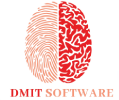How DMIT Can Help You Choose the Right Career Path from an Early Age

Navigating the right career path can be a daunting process for both students and their parents. With countless choices and increasing competition, making informed decisions early on is critical for a prosperous future. Enter Dermatoglyphics Multiple Intelligence Test (DMIT), a unique scientific approach designed to guide students in identifying their inherent strengths and talents. But what exactly is DMIT, and how can it help shape a young individual’s career?
This blog explores the basics of DMIT, its benefits for career guidance, and how it empowers students and parents to make confident career decisions.
Understanding DMIT and Its Scientific Basis
DMIT, or the Dermatoglyphics Multiple Intelligence Test, is a scientific tool that analyzes the patterns on one’s fingerprints. The premise is based on dermatoglyphics, the study of ridged skin patterns on fingers and palms, which are linked to brain development.
Fingerprint patterns are believed to correlate with the development of different regions of the brain, providing insight into an individual’s potential capabilities, learning styles, and intelligence areas. This concept is connected to Howard Gardner’s Theory of Multiple Intelligences, which suggests that intelligence goes beyond a single measure (like IQ) and includes multiple dimensions, such as linguistic, logical-mathematical, interpersonal, and intrapersonal intelligence.
DMIT uses advanced biometric and neuroscience analysis to categorize an individual’s strengths, allowing students, educators, and parents to gain a deeper understanding of natural abilities.
Key Highlights of DMIT
| Aspect | Description |
|---|---|
| Scientific Basis | Rooted in dermatoglyphics and neurology, with insights from the Multiple Intelligences Theory. |
| Non-Invasive | Requires a simple fingerprint scan, making it safe and effortless. |
| Universal Application | Suitable for all age groups, including students, professionals, and businesses. |
Benefits of DMIT for Students
Introducing DMIT early in a student’s life unlocks a world of possibilities. Below are some of the key benefits of this innovative career guidance tool.
1. Identifying Natural Strengths
Every child has unique gifts. DMIT helps uncover these talents by analyzing which areas of intelligence they dominate, such as logical reasoning, creativity, or communication. For instance, a student excelling in spatial intelligence might shine in design or architecture, while a child with strong interpersonal skills might thrive in leadership roles.
2. Personalized Learning Approaches
DMIT equips educators and parents with a better understanding of how a child learns. Some students are visual learners, while others retain more through practical application. Tailoring teaching methods to the child’s natural style leads to improved academic performance and reduced stress.
3. Building Confidence
When a student recognizes their strengths, they develop the self-confidence to pursue personal and academic goals. Knowing they excel in certain areas can reduce unnecessary comparisons with peers, fostering a healthy sense of self-worth.
4. Reducing Academic Pressure
Many students feel overwhelmed by the race to excel in all subjects, often at the expense of their well-being. DMIT helps parents and educators focus on areas where the child naturally excels, allowing them to thrive in a balanced and fulfilling way.
How DMIT Helps in Early Career Planning
With a growing global emphasis on specialized careers, starting early in the decision-making process is key. DMIT provides a significant advantage in career planning.
Career Counseling for Students
DMIT analysis categorizes students’ abilities and learning styles, offering tailored career guidance based on these insights. For example:
- A student with high linguistic intelligence might consider careers in journalism, writing, or law.
- Logical-mathematical learners could excel in engineering, data science, or finance.
- Artistic learners may thrive in creative careers like graphic design, music, or filmmaking.
Matching Careers to Passion
Far too often, students pursue careers based on trends or societal pressure, leading to a lack of fulfillment. DMIT bridges the gap by helping them align their career choices with their personal interests and innate capabilities.
Streamlining Future Decisions
From selecting the right subjects in high school to picking a suitable college major, DMIT serves as a compass at multiple stages of a student’s academic and professional life. The test’s results can simplify seemingly daunting decisions for students and parents alike.
Addressing Common Misconceptions about DMIT
Despite its benefits, DMIT for career guidance has faced skepticism. Some of the myths surrounding this tool deserve clarification to foster greater understanding.
1. DMIT is Not Scientific
Many believe DMIT lacks a solid scientific foundation, but this is incorrect. Research in dermatoglyphics, neuroscience, and the proven implications of brain development lend credibility to this method. While it isn’t a crystal ball predicting success, it offers valuable insights into natural tendencies.
2. DMIT Guarantees a Specific Career
DMIT isn’t about forcing career decisions on students. Instead, it empowers them by identifying potential pathways that align with their strengths, allowing for informed decisions without limiting options.
3. It’s Only for Young Children
While DMIT for students is popular, the test is beneficial for other age groups as well. Professionals can use it to identify career shifts or retraining opportunities, and organizations can utilize it to promote workforce efficiency.
| Misconception | Fact |
|---|---|
| DMIT predicts a single career | DMIT identifies multiple career pathways. |
| It’s only for children | Adults and professionals can benefit too. |
| Results are vague and unreliable | Results are based on established scientific theory. |
The Future of Career Guidance with DMIT
With traditional career counseling methods often generalized or trend-driven, DMIT offers a much-needed scientific alternative. It’s a tool for empowering students early on and maximizing their potential in a world that demands specialized skills and adaptability.
By using DMIT, parents, students, and educators collaboratively shape a future rooted in clarity, confidence, and purpose. It’s not just about finding the right career path; it’s about enabling individuals to thrive in ways that align with who they truly are.
Are you ready to give your child or student the edge they need? A DMIT career guidance test might be the step forward you’ve been searching for.
Frequently Asked Questions (FAQ)
How is DMIT conducted?
DMIT involves a simple process of scanning fingerprints. The data is analyzed using advanced algorithms to generate a detailed report on areas of intelligence and potential.
Is DMIT reliable?
DMIT is based on dermatoglyphics and supported by the theory of Multiple Intelligences, making it a reliable tool for career guidance. However, it should complement—not replace—holistic decision-making.
When is the best age to take DMIT?
Although DMIT can be conducted at any age, it is most commonly recommended for children aged 8 and above, as the data’s practical application increases during early academic years.
How long does it take to receive the results?
Most DMIT providers deliver a detailed report within 1-3 business days. This includes a breakdown of strengths, weaknesses, and recommended career paths.
Can DMIT alone guarantee success?
No career counseling tool can absolutely guarantee success. However, DMIT equips individuals with actionable insights that serve as a strong foundation for making informed decisions.
